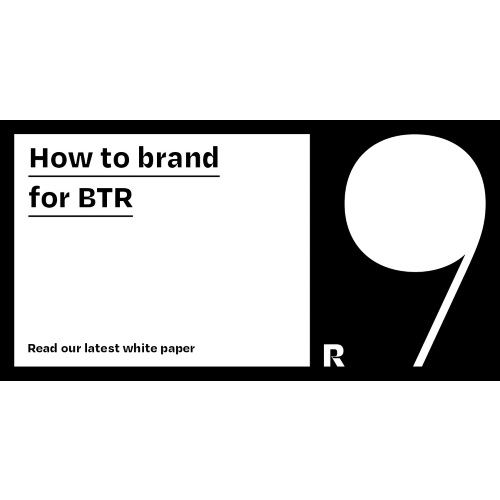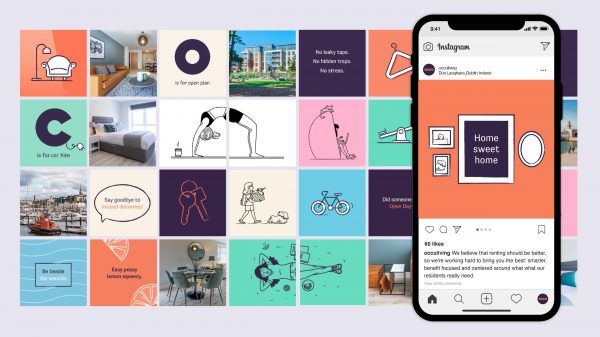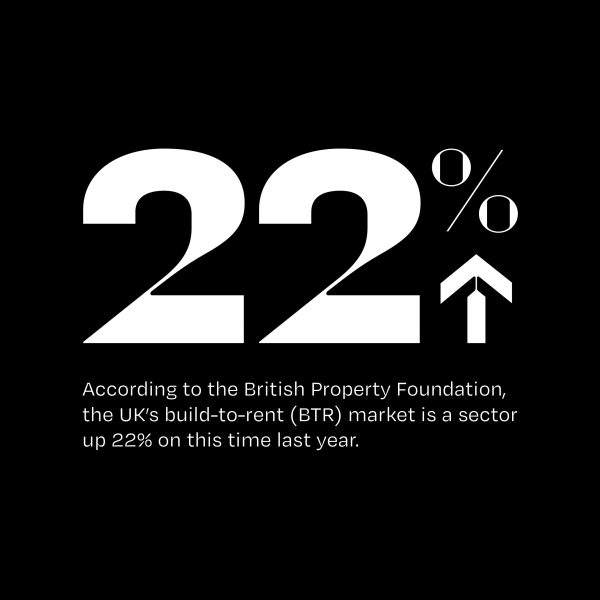
How to supercharge your BTR development post-pandemic by Rowdy Studio

Post-lockdown spikes, recessions. Construction pauses, buyer hesitancy. As with almost every sector of the UK economy last year, Covid-19 ripped up the real estate rule book—whether through stamp duty holidays and work-from-home mandates, or anticipated price plummets and corporate portfolio clear-outs.
Yet, amidst the uncertainty and fluctuation, were some promising glimmers of hope. One such opportunity came in the form of the UK’s growing build-to-rent (BTR) market: purpose-built property developments designed and constructed to appeal to renters over long-term homeowners.
According to the British Property Foundation, it’s a sector up 22% on this time last year—with 167,853 properties now available across the UK. Even more, it’s a segment showing no signs of slowing down. A recent report predicted the BTR market will triple in size over the coming years, thanks to its increasing viability post-pandemic. Renting, after all, becomes an ever more attractive proposition through financial uncertainty.

Capturing the opportunity
So, how can BTR developers best seize this opportunity? The key might be looking closely at who is left behind. A valuable part of BTR’s proposition to date has been the promise of enhanced lifestyle for Generation Rent—that is, better management, more amenities and higher standards of living for those unable or unwilling to get themselves on the property ladder.
Now, at a time when many are considering a migration out of city centres in the name of flexible working and reduced rural prices, dialling up the desirability of urban living and rental freedom has never been more crucial. Which begs the question: why is brand still largely absent from the BTR sector? We see square footage and floorplans taking precedence over storytelling and aspiration. Weekly prices and security deposits commanding messaging over independence and community. Where is the bigger picture?
After all, those ahead of the game and utilising brand are already reaping the benefits. A recent Colliers Rental Insights study found that BTR schemes with brands distinct from their developer commanded a blended premium of 10.4% over local comparable stock in 2019—a percentage only expected to grow.
1. Define your story
Every brand needs a solid story.
A narrative or articulation of what you do that is equally foundational and educational. Laying the groundwork for how you act and communicate, whilst informing your target audiences on the benefits and reasons to believe in your offering.
Take the Dublin-based BTR scheme Occu, launched last year. As a relatively new concept for the Irish market, attaining success required less spec, more story. ‘All you have to do is move in’ became its central concept— emphasising on the seamless service found across the scheme. It was this thematic focus that secured record interest and tenancy signatures upon launch. In a world where renting still suffers from the social stigma of being “dead money”, BTR schemes should use language to land the benefits.
2. Shape your experience
For years now, we know the property sector has been shifting towards a more customer-focused approach— where’s it’s less about the bricks and mortar, and more about the proposition housed inside.
But for BTR developers, this needs to go one step further. Schemes need to take their story and ensure it’s activated across every touchpoint—from websites and apps, to onsite amenities and move-in experiences.
Think about it. Why would you feel more compelled to book a desk at a WeWork or Soho Works over a Regus? It’s because we know what we’re getting, how it’ll function, and—more than anything—how easy it is. Renting a property should be no different.
Moving forward, the BTR sector will need to learn from sophisticated, amenity-rich destination brands. Whether through décor or digital, stories are only successful if brands practice what they preach. Developers need to realise and demonstrate the vision through a customer experience that feels on point, on brand, and consumer first.
3. Build your community
With a proposition defined and a customer experience created, how do you successfully build your community of tenants?
The answer will be found in listening to the needs of prospective customers. What kind of outreach are they responding to? What are they looking for right now from a rental? How can you best communicate with them and convey your key messages?
Now more than ever, brands need to be ever-evolving entities. Responsive to the rapidly changing demands of their sector and audiences. BTR developments will need to zig and zag accordingly: creating tailored communications and messaging that listens, learns, and looks to foster loyalty.
Look at industry leader Quintain, whose management arm Quintain Living—formerly Tipi—taps into the emotional desires of its tenants. “We want to create the best rental experience for you,” it writes. “We like to think we’ve thought of everything, but if we haven’t just let us know.”
